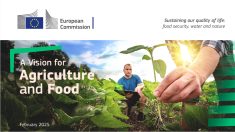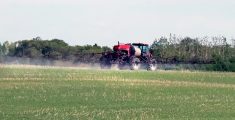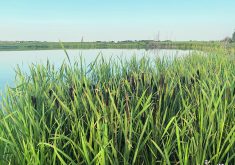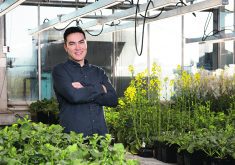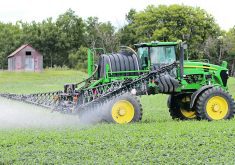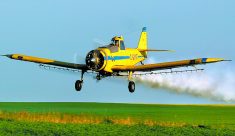Neonicotinoids are present in streams and waterways throughout southern Ontario, says a new report from Environment Canada.
However, regions with intensive horticultural production, such as southwestern Ontario and the Niagara region, are the only parts of the province with hazardous levels of the insecticides in water.
The concentrations of neonicotinoids in water are much lower in areas where corn and soybeans dominate.
Environment Canada tested surface water in Ontario for five neonicotinoids from 2012-14, including thiamethoxam and clothianidin, which are used as seed treatments on corn and soybeans.
Read Also

Farming Smarter receives financial boost from Alberta government for potato research
Farming Smarter near Lethbridge got a boost to its research equipment, thanks to the Alberta government’s increase in funding for research associations.
The average surface water concentrations of those neonicotinoids were typically 10 to 30 nanograms per litre in regions of Ontario where corn and soybeans are the primary crops.
The levels were well below the safety benchmark of 230 nanograms per litre.
John Struger, an Environment Canada scientist and lead author of the report, said it’s unlikely that detected levels of thiamethoxam and clothianidin are threats to aquatic life.
“Mean concentrations in tens of nanograms, I don’t think we’re seeing that (is) killing all these aquatic invertebrates.”
In a paper that will soon be published in the journal Chemosphere, Struger and other researchers reported that high levels of imidacloprid, another neonicotinoid, were found in surface water in parts of Ontario, specifically areas with intensive vegetable, orchard and grape production.
“At two sites in southwestern Ontario, the Canadian federal freshwater guideline value for imidacloprid (230 nanograms per litre) was exceeded in roughly 75 percent of the (water) samples collected,” the report said.
Environment Canada staff tested surface water at 15 sites in Ontario for three years in an effort to monitor neonicotinoids in creeks near agricultural land.
Health Canada’s Pest Management Regulatory Agency asked Environment Canada to collect the data because it wanted more information on neonicotinoids, commonly known as neonics.
The Environment Canada data had an impact.
In late November, the PMRA announced a plan to phase out the use of imidacloprid in Canada over the next three to five years. Health Canada said the chemical is putting aquatic insects at risk and may be jeopardizing birds and other species that rely on those insects for food.
Scott Kirby, the PMRA’s director general for environmental assessment, said data from provincial and federal departments was pivotal in Health Canada’s decision to ban imidacloprid, which was once the most popular insecticide in the world.
“Those studies have measured levels of imidacloprid in aquatic systems adjacent to agricultural areas that are well above the benchmarks that we consider protective to aquatic life.”
In addition to the proposed ban, Health Canada announced a special review of thiamethoxam and clothianidin to evaluate the risk to aquatic insects.
Neonics are applied as seed treatment to almost all of the corn and canola planted in North America and a portion of soybean acres.
Imidacloprid is applied to many crops, but in Canada is primarily used in fruit, vegetable, potato, tomato and greenhouse production.
Environment Canada scientists detected neonics at all 15 test sites in Ontario.
“We were concerned, or surprised, by how widespread the occurrence of them (is),” Struger said.
“As a class of insecticides, we did not see such widespread distribution of say the organophosphate insecticides.”
Struger, who retires from Environment Canada at the end of December, said the relationship between horticulture production and imidacloprid levels in surface water was striking.
“When you look at the data, the imidacloprid data stands out more than the thiamethoxam and clothianidin data.”
However, the science around the safety threshold of 230 nanograms per litre is not settled.
As well, the presence of multiple neonics in the same water body is concerning.
“Often we would see a couple of these compounds in the same (water) sample,” Struger said.
“Their mode of action we think is similar in how … it would affect an aquatic invertebrate, but nobody really knows about the synergistic effects of multiple exposures.”






